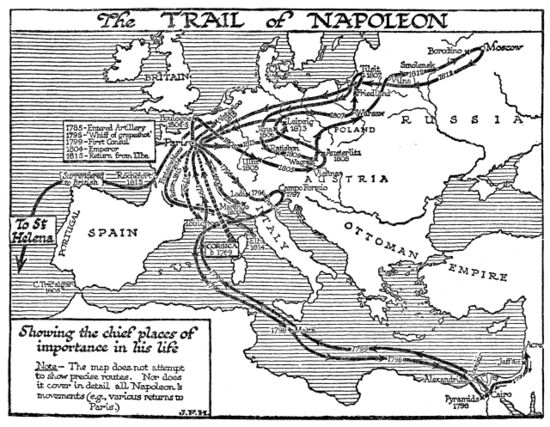imported>Chunbum Park |
imported>John Stephenson |
| (84 intermediate revisions by 5 users not shown) |
| Line 1: |
Line 1: |
| == '''[[Spanish missions in California]]''' ==
| | {{:{{FeaturedArticleTitle}}}} |
| ----
| | <small> |
| The '''Spanish missions in California''' comprise a series of twenty-one religious outposts and associated support facilities established by [[Spain|Spaniards]] of the Franciscan Order between 1769 and 1823, in order to spread the [[Catholic]] faith among the local Native American populations. The missions represented the first major effort by [[Europe]]ans to colonize the Pacific Coast region, and gave Spain a valuable toehold in the frontier land. The settlers introduced European livestock, fruits, vegetables, and industry into the region. European contact was a momentous event, which profoundly affected California's native peoples.<ref>Paddison, p. xiv: "''These missionaries, along with the soldiers, merchants, and settlers who emigrated to California before 1848, brought terrible changes to its Indian population''."</ref> In the end, the mission system failed in its objective to convert, educate, and "civilize" the indigenous population in order to transform the California natives into Spanish colonial citizens. <!-- need to better develop this thought train; architecture, literature, other -->Today, the missions are among the state's oldest structures and the most-visited historic monuments.<ref>California Missions Foundation</ref>
| | ==Footnotes== |
| | |
| ===Precontact=== | |
| The current prevailing theory postulates that Paleo-Indians entered the Americas in successive waves from [[Asia]] via a land bridge called "Beringia" that connected eastern [[Siberia]] with present-day [[Alaska]] (when sea levels were significantly lower, due to widespread glaciation) between about 15,000 to 35,000 years ago.<ref>Leffingwell, p. 9</ref> The remains of Arlington Springs Man on Santa Rosa Island are among the traces of a very early habitation in California, dated to the last ice age (Wisconsin glaciation) about 13,000 years ago.<ref>Jones and Klar 2007, p. 53: "''Understanding how and when humans first settled California is intimately linked to the initial colonization of the Americas''."</ref><ref>Oakley, p. 1172</ref> The first humans are therefore thought to have made their homes among the southern valleys of California's coastal mountain ranges some 10,000 to 12,000 years ago; the earliest of these people are known only from archaeological evidence.<ref>Paddison, p. 333: The first undisputable archaeological evidence of human presence in California dates back to ''circa'' 8,000 BCE.</ref><ref>Jones and Klar 2005, pp. 369-400: Recent research suggests that the Chumash may have been visited by Polynesians between 400 and 800 CE, nearly 1,000 years before Columbus reached [[North America]]. Although the concept was generally rejected for decades and remains controversial, studies published in peer-reviewed journals have given the idea greater plausibility.</ref> Over the course of thousands of years, California's diverse group of first settlers (later known as "Indians") evolved into hundreds of separate tribal groups, with an equally diverse range of languages, religions, dress, and other customs.<ref>Margolin, pp. 2-6</ref>
| |
| | |
| ''[[Spanish missions in California|.... (read more)]]''
| |
| | |
| {| class="wikitable collapsible collapsed" style="width: 90%; float: center; margin: 0.5em 1em 0.8em 0px;"
| |
| |-
| |
| ! style="text-align: center;" | [[Spanish missions in California#Notes|notes]]
| |
| |-
| |
| |
| |
| {{reflist|2}} | | {{reflist|2}} |
| |}
| | </small> |
Latest revision as of 10:19, 11 September 2020
Napoleon (Napoleon Bonaparte or, after 1804, Napoleon I, Emperor of the French) was a world historic figure and dictator of France from 1799 to 1814. He was the greatest general of his age--perhaps any age, with a sure command of battlefield tactics and campaign strategies, As a civil leader he played a major role in the French Revolution, then ended it when he became dictator in 1799 and Emperor of France in 1804 He modernized the French military, fiscal, political legal and religious systems. He fought an unending series of wars against Britain with a complex, ever-changing coalition of European nations on both sides. Refusing to compromise after his immense defeat in Russia in 1812, he was overwhelmed by a coalition of enemies and abdicated in 1814. In 1815 he returned from exile, took control of France, built a new army, and in 100 days almost succeeded--but was defeated at Waterloo and exiled to a remote island. His image and memory are central to French national identity, but he is despised by the British and Russians and is a controversial figure in Germany and elsewhere in Europe.
Rise to Power
Once the Revolution had begun, so many of the aristocratic officers turned against the Revolutionary government, or were exiled or executed, that a vacuum of senior leadership resulted. Promotions came very quickly now, and loyalty to the Revolution was as important as technical skill; Napoleon had both. His demerits were overlooked as he was twice reinstated, promoted, and allowed to collect his back pay. Paris knew him as an intellectual soldier deeply involved in politics. His first test of military genius came at Toulon in 1793, where the British had seized this key port. Napoleon, an acting Lieutenant-Colonel, used his artillery to force the British to abandon the city. He was immediately promoted by the Jacobin radicals under Robespierre to brigadier-general, joining the ranks of several brilliant young generals. He played a major role in defending Paris itself from counter-revolutionaries, and became the operational planner for the Army of Italy and planned two successful attacks in April 1794. He married Josephine (Rose de Beauharnais) in 1796, after falling violently in love with the older aristocratic widow.[1]
- ↑ Englund pp 63-73, 91-2, 97-8
